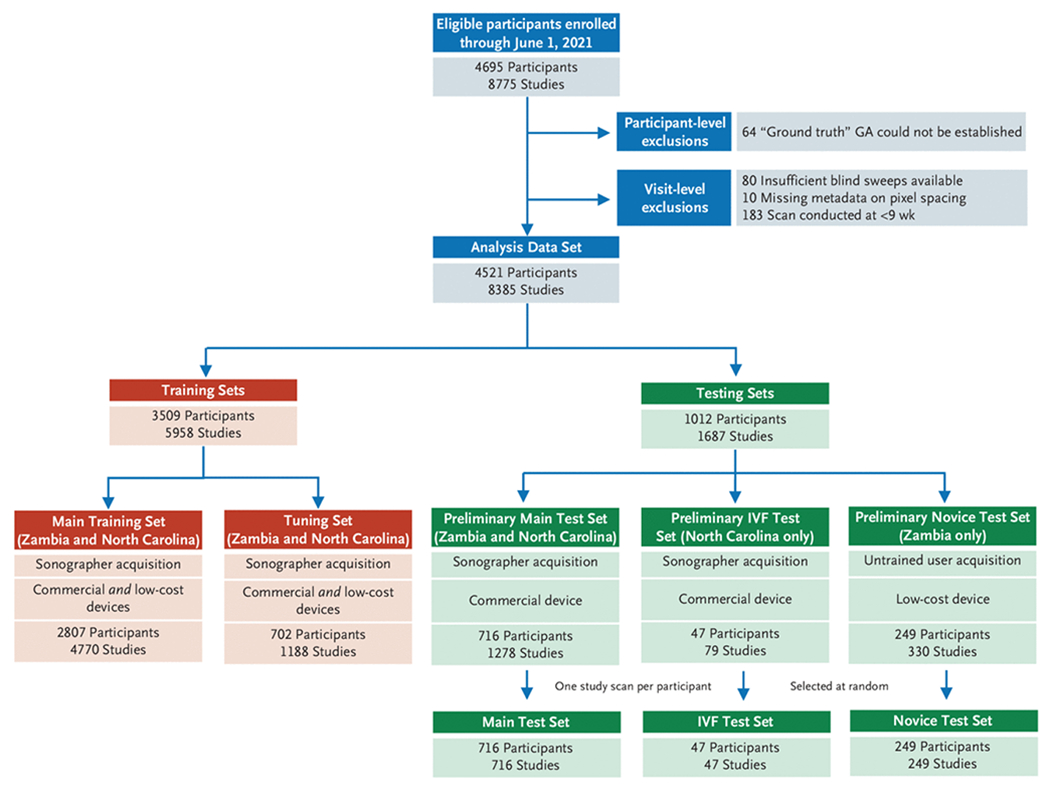Figure 1. Study Flow Chart.

After applying participant and visit-level exclusions, we created 2 training sets to develop and tune the deep learning model and 3 test sets to assess its performance. To be eligible for inclusion in a test set a participant must have at least one study with both blind sweeps and sonographer-acquired biometry available and have their “ground truth” gestational age (GA) established by a prior scan or in vitro fertilization (IVF). The IVF test set comprises all participants who conceived by IVF. The novice test set comprises all participants in whom at least one study visit included sweeps collection by a novice user on a low-cost device. (There were 8 such novices; all were nurse midwives.) The main test set was selected at random from among all remaining eligible participants Some participants apportioned to the test sets had contributed more than one study scan; in such cases we selected a single study scan at random. The training sets comprise all participants who remain after creation of the test sets and were split randomly, by participant, in a 4:1 ratio, into a main training set and a tuning set.
